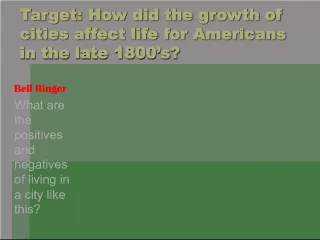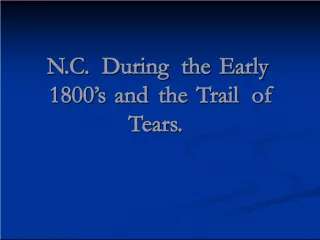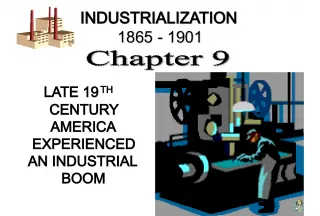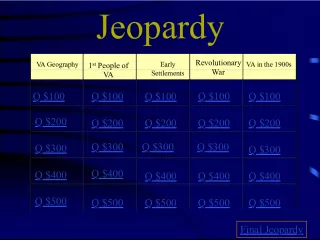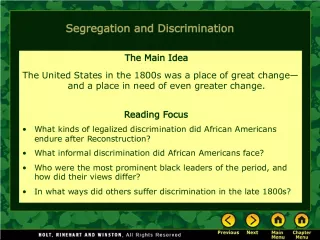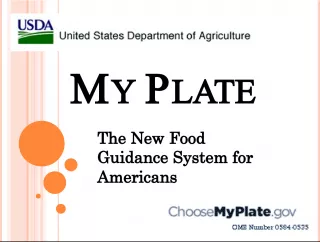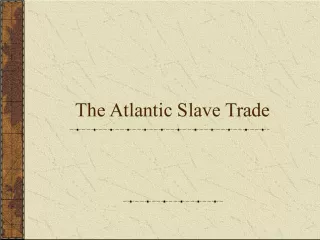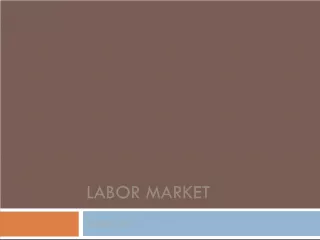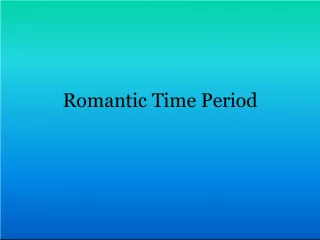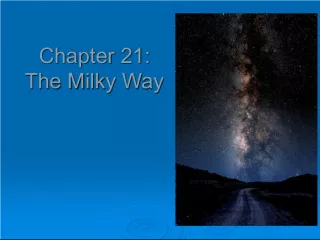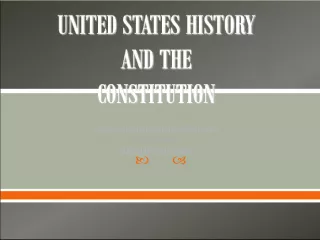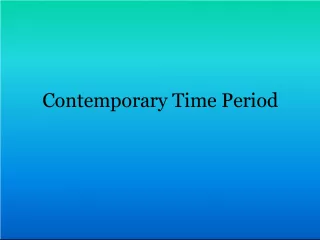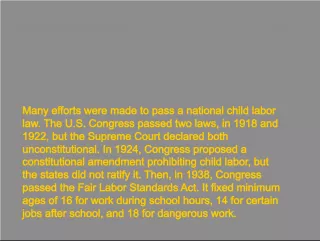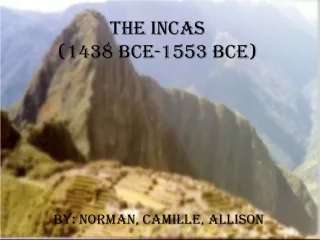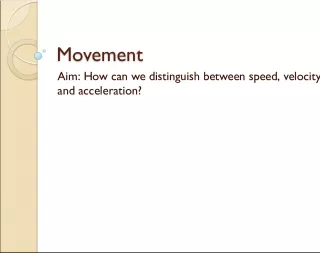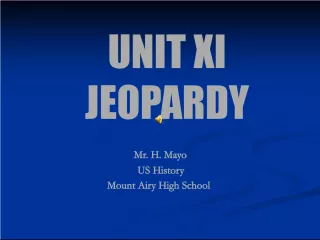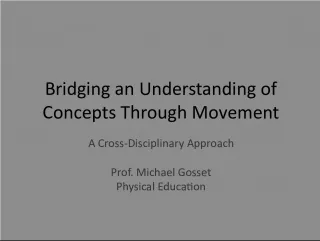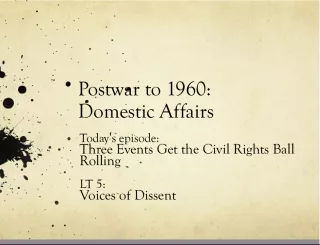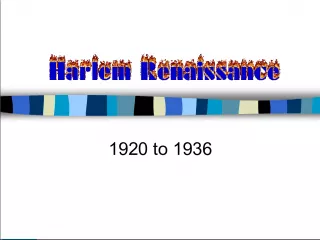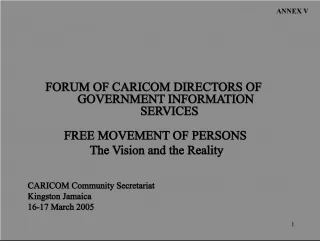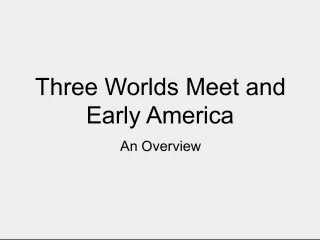The Labor Movement in the Late 1800s and Early 1900s


This chapter focuses on the conditions faced by workers during the late 1800s and early 1900s. Factory workers and those in workshops
- Uploaded on | 1 Views
-
 carmenvidal
carmenvidal
About The Labor Movement in the Late 1800s and Early 1900s
PowerPoint presentation about 'The Labor Movement in the Late 1800s and Early 1900s'. This presentation describes the topic on This chapter focuses on the conditions faced by workers during the late 1800s and early 1900s. Factory workers and those in workshops. The key topics included in this slideshow are . Download this presentation absolutely free.
Presentation Transcript
Slide1Chapter 4 Lesson 4 The Labor Movement
Slide2In the late 1800’s and early 1900’s1. People had to work 7 days a week in factories or workshops 2. Factories were hot ,cramped and loud (sweatshops) 3.Most people worked 12 hours a day 4.They were paid low wages (the average salary was $10 a week or less ) 5. Women and children were paid less 6 .Children worked for 10 cents a day in dangerous places .
Slide3Triangle Shirtwaist Factory Fire
Slide4People Began to Speak OutAgainst Child labor Lewis Hine spent 12 years traveling the U.S taking pictures of children working. His powerful photos helped to end child labor.
Slide5Samuel Gompers Samuel Gompers was a labor leader . He realized that unions would have more power if they joined together. Gompers formed the AFL or American Federation of Labor Union.
Slide6Ch 4-4Labor is another word for work . The AFL and other labor unions worked for safer working conditions, an 8 hour day, better wages and an end child labor . When company owners and labor unions couldn’t settle the differences , workers went on strike . A union named United Mine Workers worked to improve working conditions for miners. Mary Harris Jones ( Mother Jones ) worked for coal miners rights and encouraged them to join the unions.
Slide7Improving ConditionsLabor unions were successful in getting laws passed in the workplace. Unions created a holiday called Labor Day. The first Labor Day celebration was held in New York City in Sept. 1882 .
Slide8Open Book/Notes QuizPages 192-197 1.What were factories called that were hot, loud and cramped? 2.List 3 working conditions that led to the rise of Labor Unions? 3.What did workers do if labor union couldn’t settle their differences with business owners? 4.Who was Samuel Gompers? 5.Why did Samuel Gompers want labor unions to join together? 6.What did the AFL work for (list 4)? 7.Who used his photos to convince people to end child labor? 8.Who was Mary Harris Jones? 9.Where was the first Labor Day held? 10.What is another word for Labor?
Slide9Ch 4-4Cause Effect Factory workers were sometimes paid for the amount of goods they produced. They worked faster and sometimes hurt themselves. Triangle Shirtwaist Company owners did not provide fire exits or fire escapes. 146 workers died when a fire broke out in the factory.
Slide10Ch 4-4Cause Effect Factory workers were sometimes paid for the amount of goods they produced. They worked faster and sometimes hurt themselves. Triangle Shirtwaist Company owners did not provide fire exits or fire escapes. 146 workers died when a fire broke out in the factory. Pay was so low in many factories that parents could not support their families. Many children worked instead of going to school.
Slide11Ch 4-4Cause Effect Factory workers were sometimes paid for the amount of goods they produced. They worked faster and sometimes hurt themselves. Triangle Shirtwaist Company owners did not provide fire exits or fire escapes. 146 workers died when a fire broke out in the factory . Pay was so low in many factories that parents could not support their families. Many children worked instead of going to school . Labor unions gained more members in the late 1800’s and early 1900’s. Working conditions improved some.
